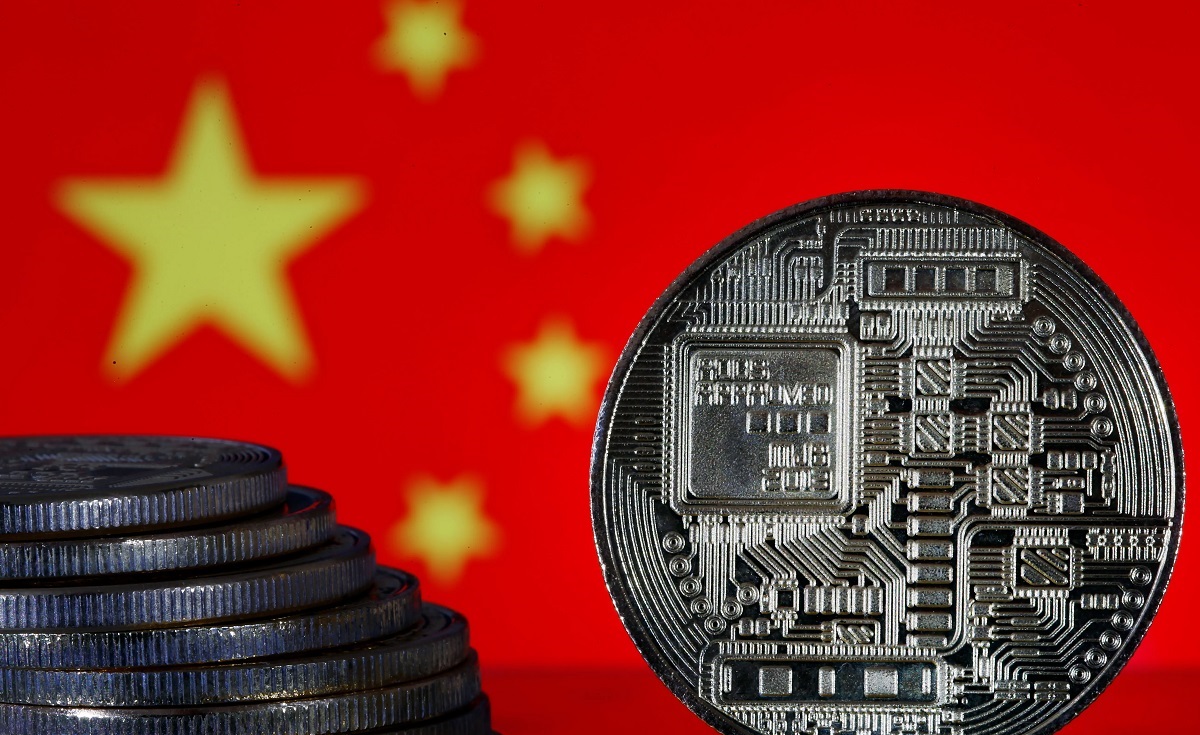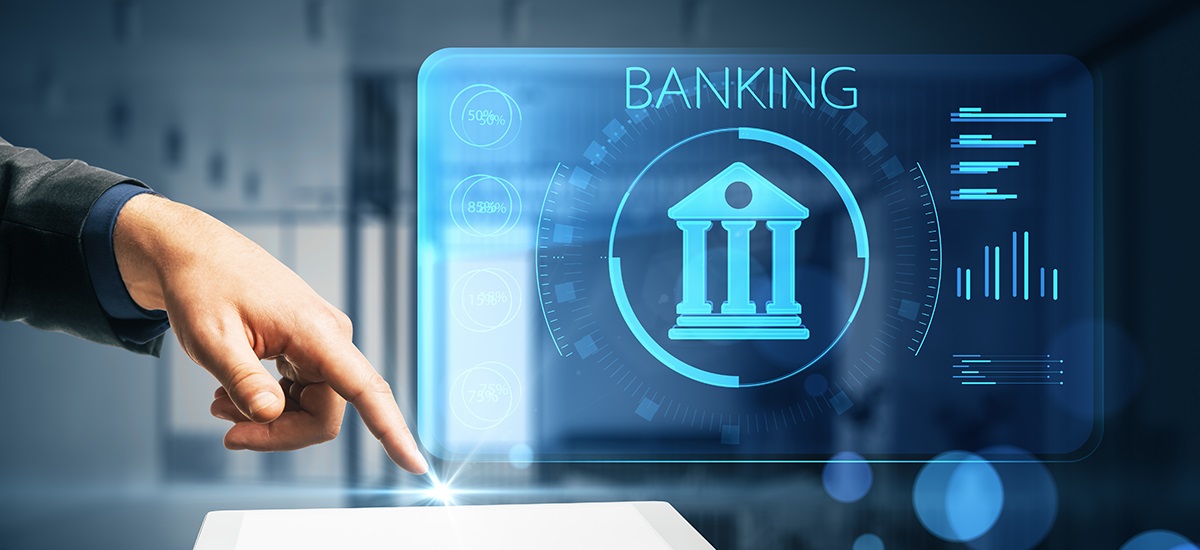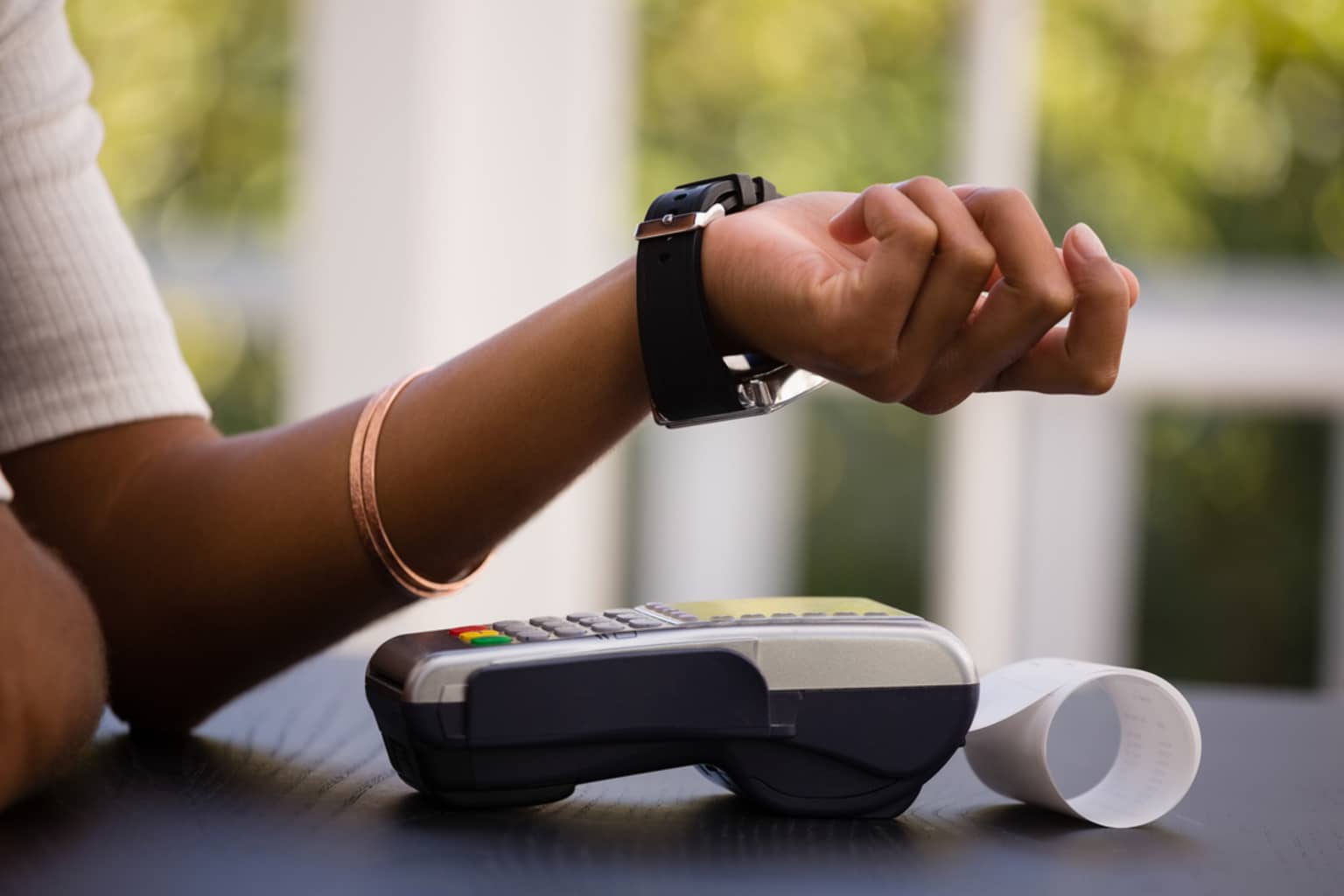Introduction
The advent of mobile technology has revolutionized numerous industries, and the banking sector is no exception. As smartphones become an integral part of our daily lives, more and more people are relying on their mobile devices to accomplish various tasks, including banking. The rise of mobile banking has changed the way customers interact with their banks, offering convenience, accessibility, and flexibility like never before.
Today, financial institutions are investing heavily in mobile banking platforms to cater to the changing needs and preferences of their customers. With the ability to perform a wide range of banking activities right from the palm of their hands, users can check their account balances, transfer funds, pay bills, and even apply for loans seamlessly. These advancements in mobile banking technology have not only simplified the banking process but have also brought significant benefits to both customers and banks.
One of the primary advantages of mobile banking is the convenience it offers. Gone are the days when customers had to physically visit a bank branch during working hours to conduct basic transactions. With mobile banking, users have the freedom to access their accounts anytime and anywhere, eliminating the need to wait in long queues or rush to the nearest branch.
Furthermore, mobile banking provides users with a more personalized and tailored banking experience. Through mobile apps, banks can gather valuable data about their customers’ preferences and behavior, enabling them to offer customized financial products and services. This personalization creates a stronger bond between the customer and the bank, leading to increased customer loyalty and satisfaction.
Another significant advantage of mobile banking is its accessibility. With the widespread adoption of smartphones, even individuals in remote or underbanked areas can now have access to banking services. Mobile banking has bridged the gap between traditional banking and the unbanked population, empowering individuals with financial inclusion and the opportunity to participate fully in the formal economy.
In the following sections, we will explore how mobile technology is likely to shape the future of the banking industry. From the integration of artificial intelligence and biometric authentication to the impact of the Internet of Things and mobile payments, we will delve into the exciting possibilities that await us in the realm of mobile banking.
Mobile Banking: The Present Scenario
In today’s digital age, mobile banking has become an integral part of the financial landscape. The convenience and accessibility it offers have made it a preferred choice for many customers. According to a recent report, the number of mobile banking users worldwide is expected to reach 1.75 billion by 2024, a clear indication of its growing popularity.
Financial institutions are continually investing in mobile banking platforms to provide a seamless experience to their customers. Mobile banking apps are designed to offer a wide array of features, allowing users to perform various banking activities with ease. From checking account balances and transaction history to transferring funds and making bill payments, mobile banking has transformed the way customers manage their finances.
One of the key advantages of mobile banking is its convenience. With just a few taps on their smartphones, users can access their accounts and carry out transactions at their own convenience. Whether it’s late at night or during a busy day, the flexibility to bank on the go has made life easier for many individuals.
Moreover, mobile banking provides a real-time view of one’s financial status. Through push notifications, users receive instant updates about their account activities, ensuring that they are always aware of any changes or transactions. This level of transparency and immediacy offers peace of mind to customers and allows them to stay in control of their finances.
In addition to convenience, mobile banking offers enhanced security measures to protect customers’ sensitive information. Banks employ robust encryption and authentication protocols to safeguard data, ensuring that user privacy is not compromised. The use of biometric authentication, such as fingerprint or facial recognition, adds an extra layer of security, making mobile banking a safe and reliable option.
Furthermore, mobile banking promotes financial literacy and provides access to educational resources. Many apps offer budgeting tools, spending trackers, and financial planning tips to help users make informed decisions about their money. This empowerment encourages good financial habits and contributes to overall financial well-being.
While the present scenario of mobile banking is promising, it is essential to recognize that there are still barriers to adoption. Some individuals may be hesitant to embrace mobile banking due to concerns about security or lack of technical knowledge. Financial institutions must address these concerns by providing robust security measures and offering user-friendly interfaces that cater to users of all backgrounds and skill levels.
In the next sections, we will explore how mobile technology is likely to shape the future of the banking industry, building upon the current developments in mobile banking and paving the way for a more innovative and efficient banking experience.
The Advantages of Mobile Banking
Mobile banking offers a myriad of advantages that have transformed the way customers interact with their banks and manage their finances. As smartphones become an indispensable part of our daily lives, the convenience, accessibility, and flexibility provided by mobile banking have made it an increasingly popular choice. In this section, we will explore some of the key advantages of mobile banking.
One of the primary advantages of mobile banking is the convenience it offers. Gone are the days when customers had to visit a bank branch during working hours to perform basic transactions. With mobile banking, users have the freedom to access their accounts anytime and anywhere. Whether it’s checking account balances, transferring funds, paying bills, or even applying for loans, all these tasks can be done with just a few taps on a smartphone. This convenience has revolutionized banking, saving customers valuable time and providing them with a hassle-free experience.
Furthermore, mobile banking provides users with a more personalized and tailored banking experience. Through mobile apps, banks can gather valuable data about users’ preferences and behavior. This data can be used to offer customized financial products and services that meet individual needs. Personalization creates a stronger bond between customers and their banks, leading to increased loyalty and satisfaction.
Another advantage of mobile banking is its accessibility. With the widespread adoption of smartphones, even individuals in remote or underbanked areas can now have access to banking services. Mobile banking has bridged the gap between traditional banking and the unbanked population, empowering individuals with financial inclusion and the opportunity to participate fully in the formal economy.
Mobile banking also enhances financial transparency and control. Users can easily track their transactions, view transaction history, and monitor account balances in real-time through mobile banking apps. This visibility and immediacy enable users to make informed financial decisions and stay on top of their finances. Push notifications and alerts keep customers updated about their account activities, ensuring that they are always aware of any changes or transactions.
Additionally, mobile banking promotes financial literacy. Many mobile banking apps offer budgeting tools, spending trackers, and financial planning tips to help users manage their money better. These educational resources empower users by providing them with the knowledge and tools to make smart financial decisions. By promoting financial literacy, mobile banking contributes to overall financial well-being and helps users achieve their financial goals.
Overall, mobile banking offers numerous advantages to both customers and banks. It provides unparalleled convenience, personalized experiences, accessibility, financial transparency, and promotes financial literacy. As the mobile banking landscape continues to evolve, these advantages will only become more prominent, leading to an even more seamless and customer-centric banking experience.
Mobile Technology: The Future of Banking
The future of banking lies in the hands of mobile technology. As smartphones continue to evolve and advance, they are poised to play an even more significant role in the banking industry. Mobile technology offers a multitude of possibilities that can revolutionize the way we bank and interact with financial institutions. In this section, we will explore the exciting prospects of mobile technology in shaping the future of banking.
One of the most significant advancements in mobile banking technology is the integration of artificial intelligence (AI). AI-powered chatbots and virtual assistants have already made their mark in the banking sector, providing personalized assistance and enhancing customer support. In the future, AI will continue to play a crucial role in mobile banking, responding to customer queries, providing recommendations, and even proactive financial advice. The ability to leverage AI will streamline the banking process, improve efficiency, and enhance the overall customer experience.
Another area where mobile technology will make a profound impact is biometric authentication. We have already seen the integration of fingerprint and facial recognition technologies in mobile banking apps, adding an extra layer of security. In the future, biometric authentication will become more sophisticated, utilizing advanced technologies like voice recognition and iris scanning. This enhanced security infrastructure will ensure that mobile banking remains secure while providing a seamless and frictionless user experience.
The Internet of Things (IoT) is another technological trend that will shape the future of banking. With IoT-enabled devices becoming increasingly common, the banking industry can leverage this technology to offer innovative services. For example, smart home devices can be connected to mobile banking apps, allowing users to control their finances and make transactions directly from their homes. IoT will enable a more connected and integrated banking experience, where financial transactions can seamlessly occur across various devices and platforms.
Mobile payments are expected to become the norm in the future of banking. The rise of mobile wallets and contactless payment technologies has paved the way for a cashless society. In the near future, mobile banking apps will offer convenient and secure payment options, eliminating the need for physical wallets. The integration of mobile payments with loyalty programs and personalized offers will further enhance the customer experience and drive adoption.
Beyond traditional banks, we are also witnessing the rise of mobile-only banks. These digital banks operate entirely through mobile apps, offering a range of banking services without the need for physical branches. Mobile-only banks provide customers with agility, ease of use, and personalized experiences that traditional banks may struggle to match. As technology continues to advance and consumer preferences shift, mobile-only banks are likely to gain more prominence in the banking industry.
The future of banking is undoubtedly intertwined with mobile technology. As smartphones become more powerful and sophisticated, the opportunities for innovation within the banking sector are vast. From AI and biometric authentication to IoT and mobile payments, mobile technology will shape the way we bank, offering convenience, security, and personalized experiences. The banking industry must embrace these advancements to stay competitive and meet the evolving needs and expectations of customers.
Enhanced Mobile Banking Experience through Artificial Intelligence
Artificial intelligence (AI) has become a game-changer in many industries, and the banking sector is no exception. AI has the potential to revolutionize the mobile banking experience by providing personalized assistance, improving customer support, and streamlining various banking processes. In this section, we will explore how AI can enhance the mobile banking experience.
One of the key applications of AI in mobile banking is the use of AI-powered chatbots and virtual assistants. These intelligent bots can interact with customers, respond to their queries, and provide real-time assistance. AI chatbots are available 24/7, eliminating the need for customers to wait for human agents to address their concerns. These chatbots can handle a wide range of tasks, such as checking account balances, transferring funds, providing transaction history, and even offering financial recommendations.
With the help of machine learning algorithms, AI chatbots can continuously learn from customer interactions and improve their responses over time. This leads to more accurate and personalized assistance, creating a more seamless and efficient banking experience. Customers can get instant answers to their questions, regardless of their location or time of day, enhancing the convenience and accessibility of mobile banking.
AI can also play a crucial role in fraud detection and prevention. Machine learning algorithms can analyze vast amounts of data to identify patterns and anomalies that may indicate fraudulent activities. By continuously monitoring transactions and user behavior, AI systems can detect and alert banks and customers about suspicious activities promptly. This proactive approach to fraud prevention enhances the security of mobile banking, protecting both customers and financial institutions from potential threats.
Moreover, AI can help banks offer personalized financial recommendations and advice to their customers. By analyzing transaction history, spending patterns, and financial goals, AI systems can provide targeted insights and suggestions tailored to individual needs. This level of personalization helps customers make informed financial decisions and achieve their financial objectives more effectively.
Another area where AI can enhance the mobile banking experience is through the automation of repetitive tasks. AI-powered automation can streamline various processes, such as loan approvals, account opening, and document verification. This reduces the time and effort required by customers and improves the overall efficiency of banking operations. With automation, transactions can be processed faster, allowing customers to receive quick responses and carry out their banking activities seamlessly.
While the integration of AI in mobile banking brings numerous benefits, it is essential to maintain a balance between automation and human interaction. While AI chatbots can handle many customer queries, it is crucial to provide an option for users to connect with human agents when needed. This human touch ensures that complex issues are appropriately addressed and that customers receive the support they need.
The future of mobile banking is undoubtedly intertwined with the advancements in artificial intelligence. AI-powered chatbots, fraud detection systems, personalized recommendations, and automated processes will shape a more personalized, efficient, and convenient banking experience. By leveraging the power of AI, banks can provide exceptional service to their mobile banking customers and stay at the forefront of innovation in the industry.
Biometric Authentication: Ensuring Security in Mobile Banking
Security is a critical concern in the world of mobile banking, and biometric authentication has emerged as a powerful solution to ensure the safety of user information and transactions. Biometric authentication utilizes unique biological traits or characteristics to verify the identity of individuals. This advanced technology provides a robust and convenient security measure, enhancing the overall security of mobile banking. In this section, we will explore how biometric authentication plays a crucial role in ensuring security in mobile banking.
One of the primary advantages of biometric authentication is its high level of accuracy and uniqueness. Biometric traits such as fingerprints, facial patterns, and iris scans are distinctive to each individual, making them extremely difficult to replicate or forge. Unlike traditional authentication methods like passwords or PINs, biometric authentication significantly reduces the risk of unauthorized access and identity theft.
Biometric authentication offers a frictionless and convenient user experience. Instead of having to remember complex passwords or carry physical tokens, users can simply use their biometric traits to authenticate themselves. With a quick touch of a fingerprint or a glance at a camera, users can securely access their mobile banking apps, authorize transactions, and perform various banking activities. This seamless authentication process saves time and eliminates the need for users to remember multiple passwords.
Mobile devices today come equipped with advanced biometric sensors that can accurately capture and match biometric traits. These sensors leverage sophisticated algorithms to ensure the accuracy and reliability of biometric authentication. With constantly improving technology and refinements in sensor design, the success rate of biometric authentication has reached impressive levels, further bolstering the security of mobile banking.
In addition to accuracy, biometric authentication provides an extra layer of security. Traditional authentication methods like passwords or PINs can be susceptible to hacking or unauthorized access. With biometric authentication, the unique biometric traits of an individual cannot be stolen or easily replicated. This significantly reduces the risk of fraudulent activities and unauthorized access to sensitive information.
Biometric authentication also offers the advantage of being non-transferable. Unlike passwords or PINs, which can be shared or stolen, biometric traits are tied directly to an individual. This means that even if someone were to obtain a user’s biometric data, they would still not be able to authenticate themselves without the physical presence of the user. This adds an extra layer of security, giving users peace of mind that their mobile banking accounts remain protected.
However, despite the numerous benefits of biometric authentication, it is essential to address concerns regarding privacy and data security. Banks must ensure that biometric data is securely stored and encrypted, protecting it from unauthorized access or breaches. Implementing strict privacy policies and adhering to data protection regulations can help build trust between customers and financial institutions, assuring users that their biometric information is handled with the utmost care.
In summary, biometric authentication is a powerful security measure that enhances the overall security of mobile banking. Its accuracy, uniqueness, convenience, and non-transferability make it an ideal solution for verifying user identity and protecting sensitive information. Biometric authentication offers a frictionless and secure mobile banking experience, giving users peace of mind while carrying out their financial activities.
Internet of Things (IoT) and its Impact on Mobile Banking
The Internet of Things (IoT) has transformed the way we interact with devices and the world around us, and it is poised to make a significant impact on the world of mobile banking. IoT refers to the interconnectedness of various devices and objects through the internet, enabling them to communicate and share data. This technology offers immense potential for enhancing the mobile banking experience and shaping the future of the industry. In this section, we will explore the impact of IoT on mobile banking.
One of the key areas where IoT will impact mobile banking is in the realm of smart devices. With the rise of smart homes and wearable devices, users can now control their banking activities through various IoT-enabled devices. For instance, users can check their account balances, transfer funds, and make payments through their smartwatches or voice-activated devices. This seamless integration of mobile banking into everyday devices enhances convenience and accessibility for users, allowing them to carry out financial transactions effortlessly.
IoT also enables more contextual and personalized banking experiences. Connected devices can gather data about user behavior, preferences, and location, allowing banks to offer targeted promotions and personalized recommendations. For example, if a user regularly visits a particular coffee shop, the mobile banking app can suggest relevant offers or discounts for that establishment. This level of personalization enhances the overall user experience and strengthens the customer-bank relationship.
Furthermore, IoT can improve security in mobile banking. By leveraging IoT-enabled devices such as biometric sensors or facial recognition cameras, banks can enhance the authentication process. For instance, a mobile banking app can use data from a smart wearable device, like a heart rate monitor or unique movement patterns, to verify the user’s identity. This multi-factor authentication approach ensures a higher level of security and reduces the risk of unauthorized access to mobile banking accounts.
IoT can also contribute to more proactive fraud detection in mobile banking. Connected devices can monitor real-time data and activity patterns, allowing banks to quickly identify and flag suspicious transactions or behaviors. For example, if a user’s smartphone and smart home security system indicate that they are in different locations during a transaction, it could be a sign of potential fraud. By leveraging IoT data, banks can promptly intervene and protect customers from fraudulent activities.
The integration of IoT in mobile banking also opens up opportunities for innovative payment methods. IoT-enabled devices can facilitate contactless payments through near-field communication (NFC) technology, allowing users to make seamless transactions with a simple tap. For example, a user can pay at a retail store using their smartwatch or smart speaker. This frictionless payment experience enhances convenience and improves the overall customer journey in mobile banking.
However, it is essential to note that as IoT expands its reach into mobile banking, security and privacy concerns must be addressed. Banks must ensure that IoT devices and networks are robustly secured against cyber threats. Moreover, customer data captured by IoT devices must be handled with the utmost care and compliance with data protection regulations.
To conclude, the Internet of Things (IoT) presents significant opportunities for mobile banking. From enabling seamless interactions with smart devices to providing contextual and personalized experiences, IoT enhances convenience, security, and the overall user experience. By leveraging IoT technology, banks can stay at the forefront of innovation and meet the evolving needs and expectations of mobile banking customers.
Mobile Payments and the Changing Landscape of Banking
The rise of mobile payments has had a profound impact on the banking industry, reshaping the way transactions are conducted and transforming the customer experience. Mobile payments refer to the ability to make monetary transactions using a mobile device, such as a smartphone or tablet. This technology has revolutionized the way consumers, merchants, and financial institutions interact, leading to a changing landscape of banking. In this section, we will explore the implications of mobile payments on the banking industry.
One of the most significant changes brought about by mobile payments is the shift towards a cashless society. As more people embrace the convenience of mobile payment apps and digital wallets, the need for physical cash diminishes. Consumers can simply use their smartphones or other mobile devices to pay for goods and services, eliminating the hassle of carrying cash or searching for ATMs. This shift towards mobile payments has implications for financial institutions, as they must adapt to a world where their traditional role as cash handlers evolves.
Mobile payments also offer enhanced security compared to traditional payment methods. With advanced encryption and tokenization technologies, mobile payment apps safeguard sensitive financial information, reducing the risk of fraud and identity theft. Additionally, mobile payment transactions often provide consumers with real-time purchase notifications, offering increased transparency and control over their finances. This added layer of security and control contributes to the growing popularity of mobile payments.
The convenience and simplicity of mobile payments enhance the customer experience, creating a seamless and frictionless transaction process. Mobile payment apps enable users to store multiple payment options, such as credit cards, debit cards, or even cryptocurrencies, in one place. This consolidation eliminates the need to carry multiple cards and allows users to make purchases with just a few taps on their mobile devices. Moreover, mobile payment apps often offer features like loyalty rewards, digital receipts, and personalized offers, further enhancing the user experience.
From a merchant’s perspective, mobile payments bring benefits such as faster transaction processing and reduced reliance on traditional point-of-sale equipment. With mobile payment solutions, businesses can accept payments anywhere, anytime, without the need for dedicated payment terminals. This flexibility allows small businesses and entrepreneurs to expand their customer base and reach a wider audience.
The changing landscape of banking due to mobile payments also extends to the integration of payment services within messaging apps. Many messaging apps now offer built-in payment functionalities, allowing users to send money to friends and family seamlessly. This integration blurs the line between social interactions and financial transactions, making payments more convenient and intuitive for users. Financial institutions must adapt to this evolving landscape and explore partnerships with messaging app providers to remain competitive and meet customer expectations.
As mobile payments continue to gain traction, banks are shifting their focus towards providing robust and secure mobile payment solutions. By partnering with mobile payment app providers or developing their own applications, banks can cater to the changing preferences of their customers and offer innovative payment options. Additionally, banks can leverage mobile payment data to gain insights into consumer behavior and tailor their products and services accordingly.
In summary, mobile payments are transforming the banking industry by ushering in a cashless society, enhancing security, improving the customer experience, and reshaping the relationship between consumers, merchants, and financial institutions. As mobile payments continue to evolve, banks must adapt and innovate to stay relevant in this rapidly changing landscape of banking.
The Rise of Mobile-only Banks
With the rapid advancement of technology, we are witnessing the rise of mobile-only banks, also known as digital banks or neobanks. These are financial institutions that operate exclusively through mobile apps, offering a range of banking services without the need for physical branches. The emergence of mobile-only banks is reshaping the banking industry, bringing forth new possibilities and disrupting traditional banking models. In this section, we will explore the reasons behind the rise of mobile-only banks and the implications for the future of banking.
One of the key factors driving the popularity of mobile-only banks is the convenience and accessibility they offer. Users can open an account and carry out various banking activities right from their smartphones, anytime and anywhere. The absence of physical branches eliminates the need for customers to visit a bank in person, wait in long queues, or adhere to traditional banking hours. This enhanced convenience aligns with the fast-paced, mobile-centric lifestyle of modern consumers.
Mobile-only banks also provide a streamlined and user-friendly experience. The mobile apps are designed with simplicity and ease of use in mind, allowing users to navigate through different features intuitively. Opening an account, depositing money, transferring funds, and managing finances can all be done with just a few taps on a smartphone screen. This simplicity appeals to a generation of tech-savvy users who prefer seamless digital interactions.
Additionally, mobile-only banks often offer enhanced personalization compared to traditional banks. Through data analysis and machine learning algorithms, mobile-only banks can gather insights about their customers’ preferences, spending habits, and financial needs. This enables them to provide customized recommendations, tailored financial products, and personalized customer support. The focus on personalization strengthens the customer-bank relationship and fosters a sense of loyalty and trust.
Another crucial aspect of mobile-only banks is their competitive pricing structure. By eliminating the costs associated with physical branches and infrastructure, mobile-only banks can offer lower fees, higher interest rates on deposits, and attractive rewards programs. This appeals to customers who are seeking more economical banking solutions and are looking to maximize their savings and benefits.
Moreover, mobile-only banks have the advantage of agility and faster innovation compared to their traditional counterparts. With lean operations and a digital-first approach, they can quickly adapt to market demand and introduce new features and services. This adaptability ensures that mobile-only banks stay at the forefront of technological advancements and can readily respond to changing customer needs.
The rise of mobile-only banks does present some challenges for traditional banks. Established banks must embrace digital transformation to remain competitive and meet evolving customer expectations. They need to invest in mobile banking platforms, enhance their digital capabilities, and explore partnerships with fintech companies to deliver seamless and innovative banking experiences. Furthermore, traditional banks need to address the trust factor associated with mobile-only banks by strengthening their own digital security measures and emphasizing the value of their established brand and reputation.
In summary, the rise of mobile-only banks signifies a significant shift in the banking landscape. The combination of convenience, user-friendly experiences, personalization, and competitive pricing has attracted a growing number of users to opt for these digital banking alternatives. Traditional banks must adapt to this changing landscape and find ways to incorporate digital innovation to remain relevant in the evolving world of banking.
The Challenges of Mobile Technology in Banking
While mobile technology has brought numerous benefits to the banking industry, it also presents challenges that financial institutions must navigate. From security concerns to technical limitations, it is essential to address these challenges to ensure a seamless and secure mobile banking experience. In this section, we will explore some of the key challenges associated with mobile technology in banking.
One of the primary challenges is the ever-present issue of security. Mobile devices are highly susceptible to various security threats, such as malware, phishing attacks, and data breaches. Financial institutions must implement robust security measures, including encryption, multi-factor authentication, and proactive monitoring, to safeguard customer data and protect against unauthorized access. Educating customers about best practices for mobile device security is also crucial in mitigating security risks.
Furthermore, the rapid evolution of mobile technology brings with it the challenge of keeping up with the latest advancements. Banks need to continually invest in mobile banking infrastructure and stay updated with new features, devices, and operating systems. Failure to keep pace with technological advancements can result in an outdated mobile banking experience, hampering customer satisfaction and trust. Regular updates and improvements to mobile banking apps are necessary to provide a seamless and up-to-date user experience.
Technical limitations can also pose challenges in mobile banking. Mobile devices come in various forms, with different screen sizes, operating systems, and processing capabilities. Ensuring compatibility across multiple devices and platforms can be complex, requiring banks to invest significant resources in development and testing. Optimization for different devices is necessary to provide a consistent and user-friendly experience to all customers, regardless of their choice of mobile device.
Another challenge is the need to strike a balance between personalization and privacy. Mobile banking apps gather a vast amount of personal data, ranging from transaction history to location information. While this data is used to provide personalized banking experiences, banks must handle it responsibly and comply with data protection regulations. Striking the right balance between personalization and privacy is crucial to maintain customer trust and confidence in mobile banking.
Moreover, ensuring a seamless integration of mobile banking with traditional banking systems can be challenging. Mobile banking operates in a connected ecosystem, requiring integration with various back-end systems, including core banking systems and payment gateways. Achieving a seamless flow of data and real-time synchronization between mobile apps and existing banking infrastructure requires careful planning and execution.
Lastly, user adoption and education can be a challenge in mobile banking. While smartphones are widely used, there may still be a portion of the population, such as older adults or individuals in remote areas, who are less comfortable with mobile technology. Financial institutions must provide user-friendly interfaces, clear instructions, and educational resources to encourage the adoption of mobile banking among all customer segments. Addressing concerns about security, data privacy, and technical complexities can help build trust and drive wider adoption of mobile banking services.
In summary, while mobile technology has brought tremendous benefits to the banking industry, there are challenges that financial institutions must address to ensure a successful mobile banking experience. These challenges include security risks, keeping up with technological advancements, dealing with technical limitations, maintaining a balance between personalization and privacy, integrating mobile banking with existing systems, and encouraging user adoption and education. By proactively addressing these challenges, banks can harness the full potential of mobile technology and provide a secure and seamless mobile banking experience for their customers.
Conclusion
The integration of mobile technology in the banking industry has had a profound impact, shaping the way customers interact with financial institutions and manage their finances. Mobile banking has provided convenience, accessibility, and personalized experiences that were previously unimaginable. From the present scenario of mobile banking to the future possibilities brought by artificial intelligence, biometric authentication, the Internet of Things, and mobile payments, the possibilities are endless.
The advantages of mobile banking, such as convenience, personalization, and accessibility, have transformed the banking experience for customers. The rise of mobile-only banks has challenged traditional banking models, offering streamlined services and competitive pricing structures. However, mobile technology also presents challenges, including security risks, technological advancements, technical limitations, privacy concerns, and ensuring seamless integration with existing banking systems.
Despite these challenges, it is clear that mobile technology will continue to revolutionize the banking industry. Financial institutions must adapt to this rapidly changing landscape, investing in robust security measures, staying up-to-date with technological advancements, providing personalized experiences, and educating customers about mobile banking best practices.
The future of banking lies in the hands of mobile technology. As smartphones become more powerful and ubiquitous, mobile banking will continue to evolve, offering even more innovative solutions for customers. The industry must embrace artificial intelligence, biometric authentication, the Internet of Things, and mobile payments to stay competitive and meet the ever-changing needs and expectations of customers.
In conclusion, mobile technology has transformed the banking industry, enhancing convenience, accessibility, and personalization. While challenges exist, the possibilities ushered in by mobile technology are limitless. By harnessing the power of mobile technology and addressing the challenges, banks can create a secure, seamless, and customer-centric mobile banking experience for individuals worldwide.

























